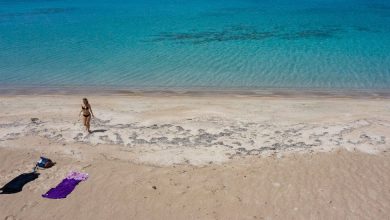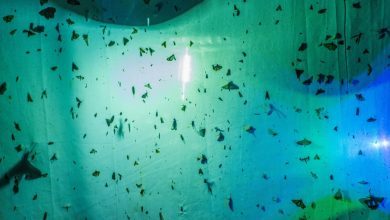SpaceX Tourists Will Make Attempt at Spacewalk During Flight

Space tourists have flown to the International Space Station, and even orbited Earth in their own space capsule for three days. Now, a group of private astronauts wants to attempt a spacewalk, one of the most dangerous things people flying in space have ever done.
As soon as the end of this year, four private astronauts, including Jared Isaacman, the billionaire who chartered SpaceX’s first space tourist mission last year, could launch to space aboard the company’s Crew Dragon capsule. At some point during their five days circling Earth, at least one of the crew members will exit the spacecraft for what would be the first spacewalk conducted by a nongovernment astronaut.
Spacewalking “is the riskiest thing that we do as astronauts,” said Sandra Magnus, a retired NASA astronaut who operated the space station’s robotic arm in 2002 while other astronauts completed extravehicular activities, NASA’s term for spacewalks. Referring to the astronauts’ bulky protective spacesuits, she said, “You’re in a one-person spaceship, attached by a wire to the outside of your vehicle.”
The mission is to be the first in a program called Polaris, announced on Monday by SpaceX and Mr. Isaacman. The main goals of Polaris are to “demonstrate new technologies” and to “conduct extensive research,” according to a news release for the mission. Mr. Isaacman will also work with SpaceX on two future Polaris missions: a second in the coming years aboard Crew Dragon, which NASA relies on to transport its astronauts to the space station, andanother which would use Starship, the gigantic next-generation rocket system that SpaceX is developing.
Mr. Isaacman, the founder of Shift4, a payments processing system, declined to say how much he was paying for any of the flights, but said the flights aimed to raise money for St. Jude Children’s Research Hospital, as with Inspiration4, the mission he chartered in September 2021.
Mr. Isaacman will fly with three other passengers: Scott Poteet, a retired Air Force pilot who was the mission director for the Inspiration4 mission; Sarah Gillis, a SpaceX engineer overseeing the company’s astronaut training program; and Anna Menon, another SpaceX engineer who works as a flight director in the company’s mission control.
If the Polaris mission goes as planned, Ms. Menon will reach space before her husband, Dr. Anil Menon, SpaceX’s former medical director who last year was picked by NASA as an astronaut candidate.
Astronauts put themselves at grave risk during spacewalks. On the space station, pairs of highly trained crew members periodically put on bulky white spacesuits before stepping outside the orbital laboratory to do maintenance and repairs on the exterior. They first go through an airlock — a small room that slowly depressurizes its atmosphere to the near vacuum of orbit — before exiting the relative safety of the station.
No astronaut has ever died during a spacewalk. But in 2013, a clogged filter caused water to enter the helmet of Luca Parmitano, an Italian astronaut for the European Space Agency, during a trip to the station’s exterior.
The procedure for a spacewalk during Mr. Isaacman’s proposed mission would differ from that of the space station. Unlike the orbiting outpost, the capsule has no airlock. Instead, the Crew Dragon’s entire cabin will depressurize before the spacewalk, akin to the first American spacewalks during Gemini, a pre-Apollo NASA human spaceflight program in the 1960s.
“This will be no different for Dragon,” Mr. Isaacman said, “other than we benefit from 50-plus years of progression and technology.”
Ms. Menon said at least one of the astronauts would participate in the spacewalk, but did not say who. With no protective atmosphere in their capsule, all four would have to wear new SpaceX spacesuits, currently under development, to be protected from the near vacuum during the event. During SpaceX’s astronaut missions, there have been no accidents requiring live-fire testing of its custom flight suits, which are designed to protect a person in space for a few hours in the event of an emergency.
“There’s a fantastic team of brilliant engineers working on the spacesuit, and it’ll be really exciting to work together as their design unfolds,” Mr. Isaacman said.
Adding a spacewalking capability for nongovernment astronauts underscores the immense degree of risk — and freedom — private space companies can take on in an industry that has no safety regulations once a vehicle carrying private astronauts reaches space.
While the Federal Aviation Administration manages launch site safety, no agency on Earth oversees the safety of private endeavors such as SpaceX’s spacewalking plans. In 2004, Congress passed a moratorium on spaceflight regulations that has been extended most recently to 2023. That halt on safety rules, intended by lawmakers to allow the nascent space industry to innovate, requires space tourists to sign “informed consent” forms to affirm their awareness of the risks.
“We want the commercial industry to be successful,” Dr. Magnus said. “But we still have this gap in the U.S. oversight role, and where are we going to resolve that? How far along are we going to get before that gets fixed?”




